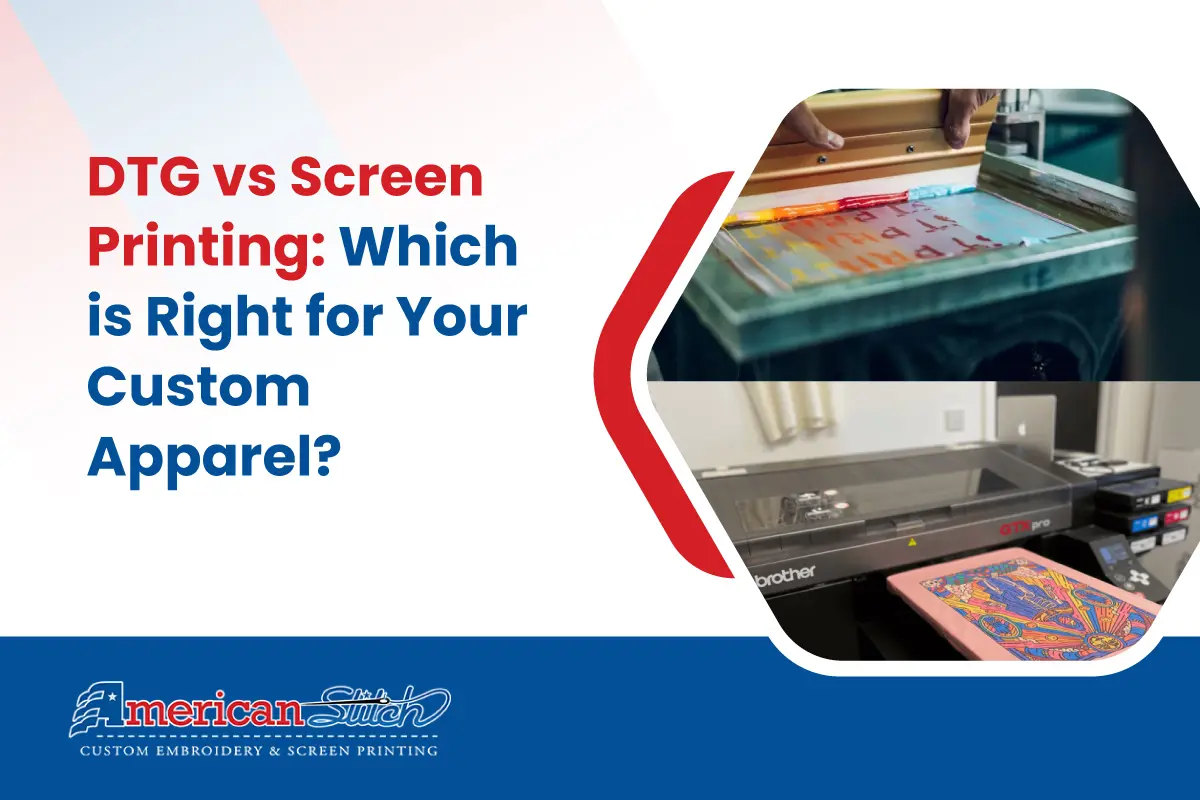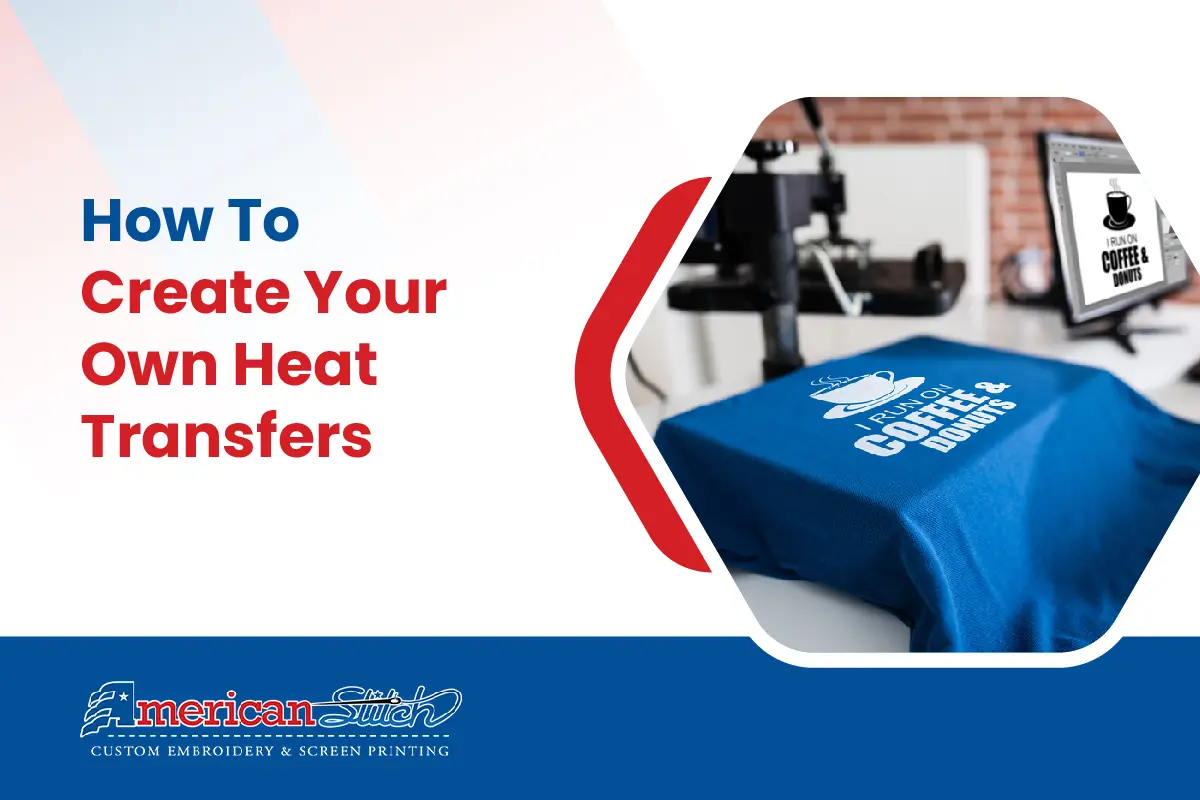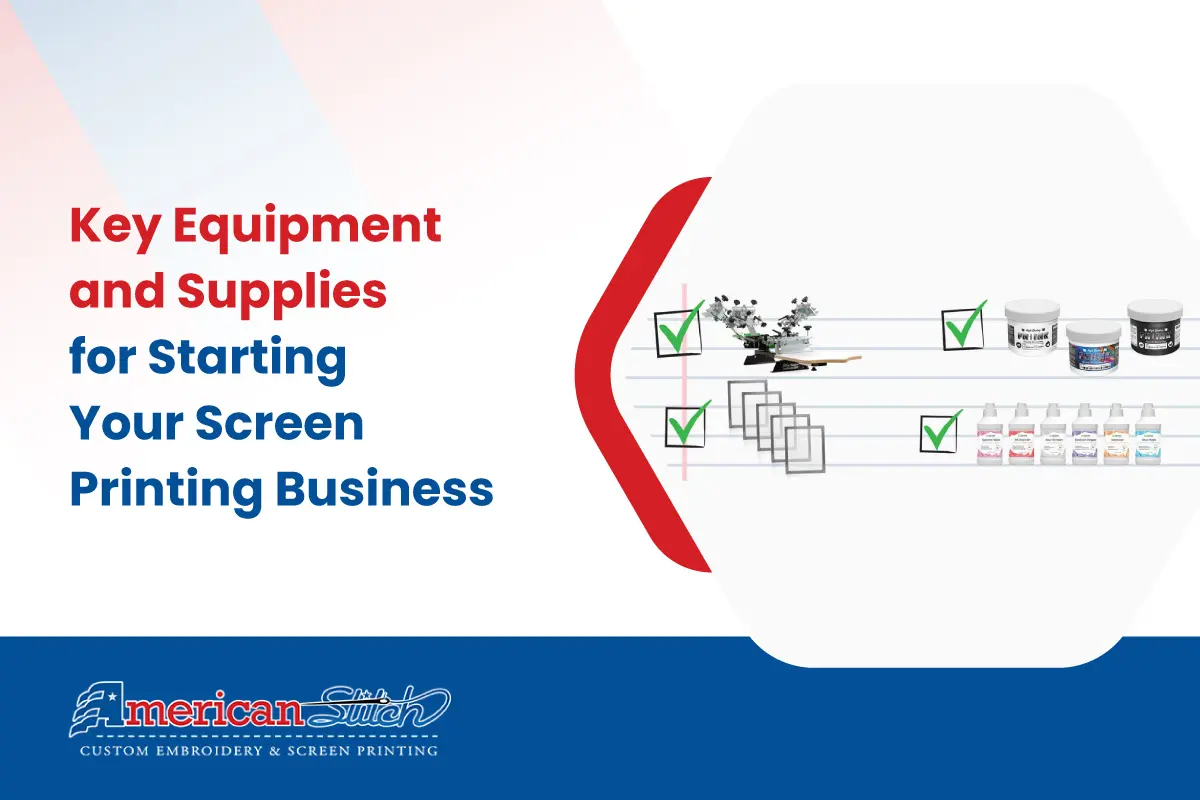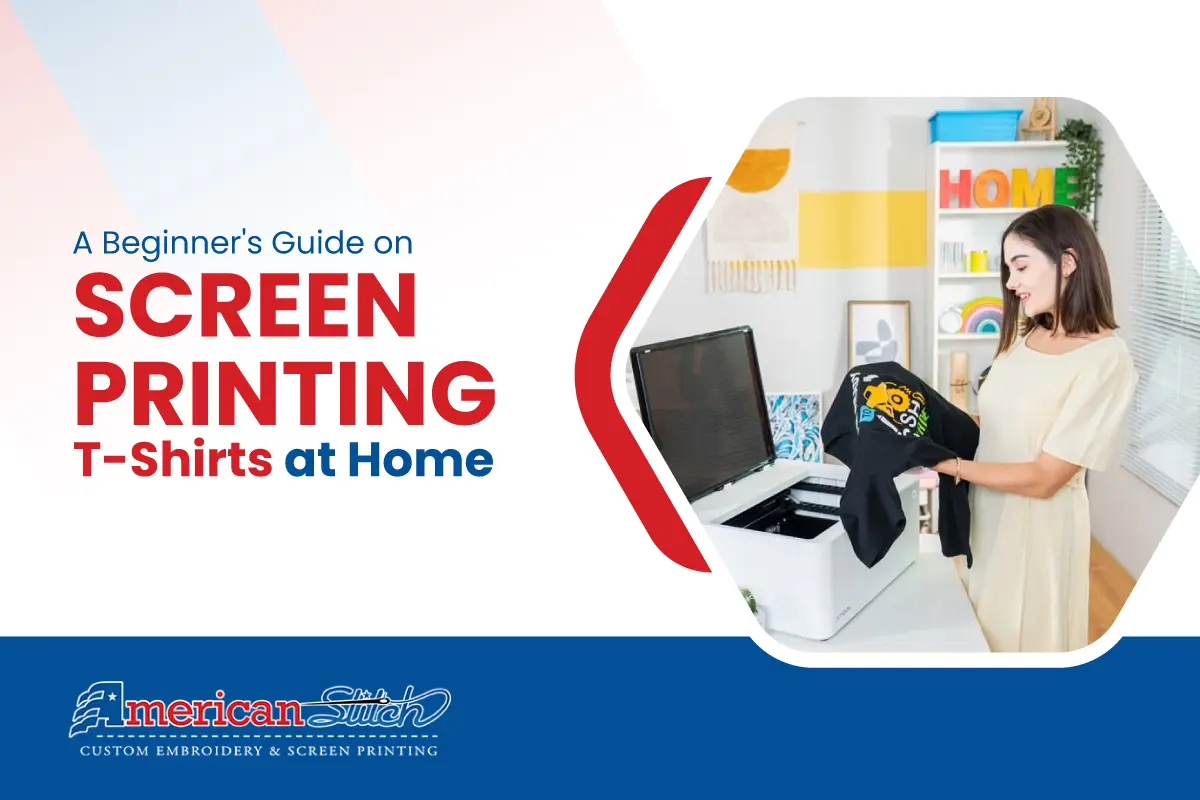In today’s world of fashion and self-expression, custom apparel printing has taken center stage. It’s a means by which individuals and businesses alike can transform garments into personalized works of art. Among the various techniques available, two have gained significant popularity: Direct-to-Garment (DTG) printing and Screen Printing.
The popularity of these methods has surged, fueled by the desire for customized clothing that speaks to one’s identity. Yet, in the midst of this printing revolution, the question remains: Which method is suitable for your specific needs?
In this comprehensive exploration of DTG vs Screen Printing, we will dissect the intricacies of both techniques, delving into their strengths, weaknesses, and the scenarios in which each shines. Join us on this journey to uncover the perfect fit for your custom apparel needs.
Table of Contents
What is DTG Printing?
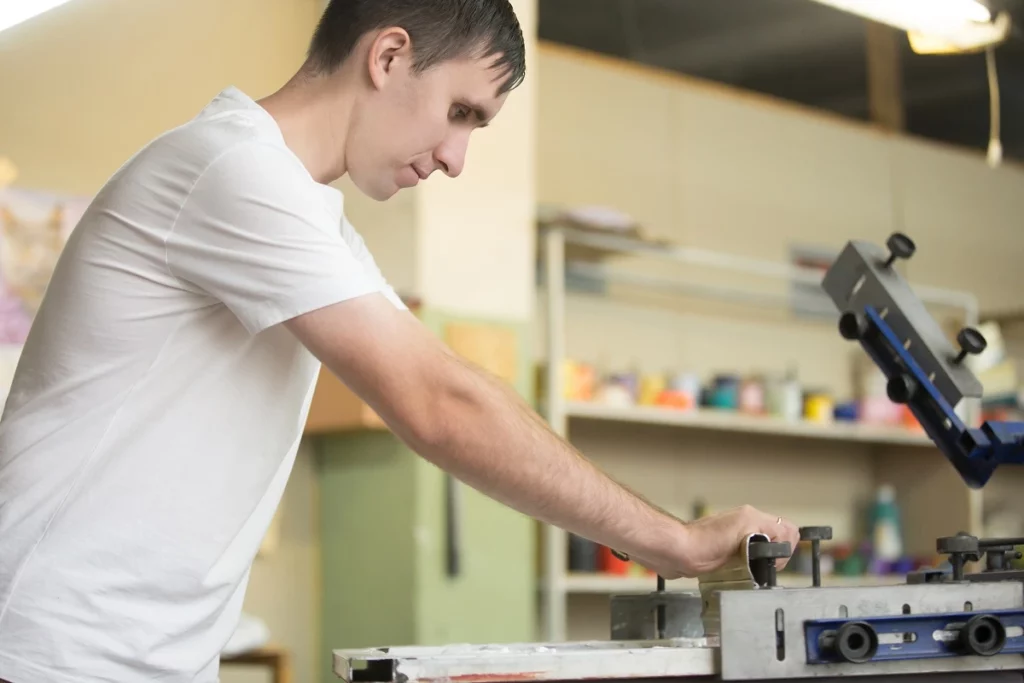
DTG printing, short for Direct-to-Garment printing, is a modern and innovative method of apparel decoration. It involves using a specialized inkjet printer to apply ink directly onto the fabric, creating detailed and vibrant designs. Unlike traditional methods, DTG printing allows for full-color prints with intricate details, making it a popular choice for custom apparel.
Technology and Equipment
DTG printing relies on advanced inkjet technology. Here’s how it works:
- Pre-Treatment: Before printing, the fabric is treated with a pre-treatment solution. This helps the ink adhere to the fabric and ensures vibrant colors.
- Printing: The garment is loaded onto a flatbed printer, similar to a traditional office inkjet printer but larger and specifically designed for textiles. The printer applies water-based ink directly to the fabric’s surface.
- Curing: After printing, the garment is heat-cured to set the ink. This ensures that the design remains durable, even after multiple washes.
- Quality Control: The final product undergoes quality control checks to ensure color accuracy and print quality.
Types of Garments Suitable for DTG Printing
DTG printing is highly versatile and suitable for a wide range of garments, including:
- T-Shirts: DTG printing is commonly used for custom t-shirts, offering a soft, breathable print that becomes one with the fabric.
- Hoodies and Sweatshirts: These thicker garments are ideal for DTG printing, as it can handle the additional material.
- Tote Bags: DTG is not limited to clothing; it can also be used to create custom tote bags with intricate designs.
- Baby Apparel: The water-based, non-toxic inks used in DTG printing make it safe for baby onesies and children’s clothing.
- Accessories: DTG printing can be applied to a variety of accessories like caps, socks, and bandanas, adding a personalized touch to your style.
- Team Jerseys: Sports teams often opt for DTG printing to create custom jerseys with team logos and player names.
- Event Merchandise: DTG is perfect for producing event merchandise like festival t-shirts or conference swag with intricate graphics.
What is Screen Printing?
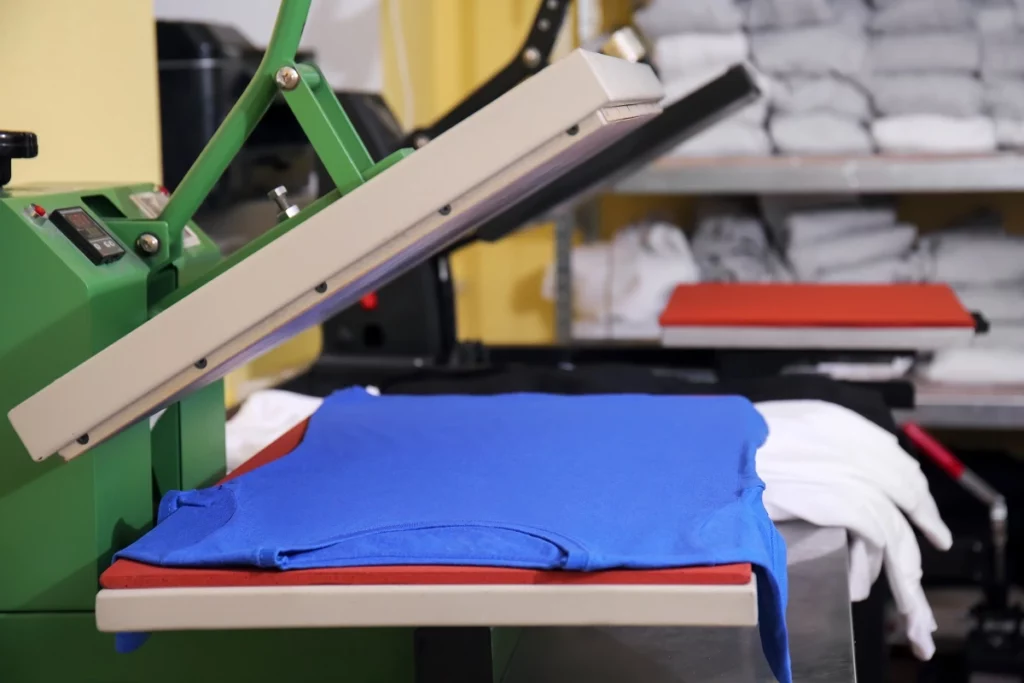
Screen printing, also known as silk-screen printing, is a versatile and time-honored method of transferring designs onto various surfaces, including fabric. It involves creating a stencil, or “screen,” and using it to apply ink onto the material, creating intricate and long-lasting prints.
The Screen Printing Process
1. Preparing the Screen: The process begins with creating a screen for each color in the design. Screens are typically made of a fine mesh stretched tightly over a frame. The areas not meant to be printed are blocked off, leaving open spaces for the ink to pass through.
2. Design Transfer: The design to be printed is transferred onto the screen as a stencil. This is usually done photographically, creating a negative image on the screen.
3. Ink Application: The screen is placed over the fabric, and ink is applied to the top of the screen. A squeegee is used to push the ink through the mesh and onto the fabric. The ink passes through the open areas of the stencil, creating the desired design.
4. Curing the Ink: After printing, the fabric is typically passed through a curing process to set the ink. This can be done using heat, often by running the fabric through a conveyor dryer. Cured ink becomes durable and resistant to washing and wear.
Types of Garments Suitable for Screen Printing
Screen printing is well-suited for a variety of garments and textiles. Here are some examples:
- T-Shirts: Screen printing is a popular choice for t-shirts, creating bold and eye-catching designs that can withstand frequent washing and wear.
- Hoodies and Sweatshirts: The thicker fabric of hoodies and sweatshirts allows for vibrant prints that maintain their quality over time.
- Caps and Hats: Screen printing is used to decorate the front panels of caps and hats, adding logos, slogans, or designs.
- Jerseys: Sports teams often opt for screen printing to apply for player names and numbers on jerseys due to their durability.
- Tote Bags: Screen printing is also used to customize tote bags, making them popular promotional items or event giveaways.
- Posters and Art Prints: Beyond apparel, screen printing is used to create art prints and posters, appreciated for its vibrant colors and long-lasting quality.
DTG vs Screen Printing: Key Differences
When we dive into the comparison of screen printing vs DTG, a fascinating array of distinctions becomes apparent. Let’s explore some of the key differences that set these two apparel printing methods apart.
| Criteria | DTG Printing | Screen Printing |
| Cost | Moderately expensive for single prints. | Cost-effective for bulk orders. |
| Design Complexity | Ideal for intricate and detailed designs. | Best for simpler designs with bold colors. |
| Durability | Good for short-term wear; may fade over time. | Highly durable and long-lasting, ideal for repeated washes. |
| Turnaround Time | Quick turnaround for small orders. | Longer setup time, but faster for large batches. |
| Color Blending | Excellent for color blending and gradients. | Ideal for solid colors, may not achieve subtle color transitions. |
| Comfort and Feel | Provides a soft and comfortable feel on the fabric. | Ink can add some texture to the fabric, which may affect comfort. |
| Environmental Impact | Water-based inks, generally considered more eco-friendly. | Solvent-based inks may have environmental concerns. |
| Print Quality | Excellent color reproduction with photo-realistic quality. | Rich, vibrant colors with sharp details. |
DTG Printing vs Screen Printing: A Closer Look
DTG vs Screen Printing: Cost
- DTG Printing: While cost-effective for small quantities or single prints, DTG can become expensive for larger orders.
- Screen Printing: Offers cost-efficiency for bulk orders due to the setup costs being spread across a larger quantity.
DTG vs Screen Printing: Design Complexity
- DTG Printing: Excels in handling intricate and detailed designs, including photorealistic images.
- Screen Printing: Best suited for simpler designs with bold colors, making it ideal for logos and graphics.
DTG vs Screen Printing: Durability
- DTG Printing: Prints may fade over time with repeated washing and exposure to sunlight.
- Screen Printing: Known for its durability, with colors that remain vibrant even after numerous washes.
DTG vs Screen Printing: Turnaround Time
- DTG Printing: Offers a quick turnaround time for small orders, making it suitable for on-demand or short-run printing.
- Screen Printing: Requires longer setup times but becomes more time-efficient for large batches.
DTG vs Screen Printing: Color Blending
- DTG Printing: Excellent for color blending and gradients.
- Screen Printing: Ideal for solid colors but may not achieve subtle color transitions.
DTG vs Screen Printing: Comfort and Feel
- DTG Printing: Provides a soft and comfortable feel on the fabric.
- Screen Printing: Ink can add some texture to the fabric, which may affect comfort.
DTG vs Screen Printing: Environmental Impact
- DTG Printing: Generally considered more eco-friendly due to the use of water-based inks.
- Screen Printing: There may be environmental concerns associated with solvent-based inks.
DTG vs Screen Printing: Print Quality
- DTG Printing: Excels in color reproduction and can achieve photo-realistic quality.
- Screen Printing: Offers rich, vibrant colors with sharp details, especially for bold designs.
Choosing the Right Method: DTG vs Screen Printing
Selecting the ideal printing method, whether DTG (Direct-to-Garment) or Screen Printing, is a pivotal decision in your custom apparel journey. To make this choice wisely, let’s delve into some factors to consider and real-life scenarios where one method might outshine the other.
1. Budget
- DTG Printing: Perfect for small to medium budgets, especially when you require limited quantities or single prints. Its cost-effectiveness for short runs makes it a top choice for smaller projects.
- Screen Printing: Ideal for those with a larger budget or those planning bulk orders. While setup costs may be higher, the price per unit decreases significantly for large quantities.
2. Order Size
- DTG Printing: The go-to solution for on-demand or small to medium-sized orders. If you need a limited number of customized items, DTG is efficient and cost-effective.
- Screen Printing: Best suited for substantial orders. When you’re printing in bulk, the initial setup time becomes negligible, and the per-unit cost decreases considerably.
3. Design Complexity
- DTG Printing: Celebrated for its prowess in handling intricate and detailed designs, including photorealistic images. If your design involves gradients, fine lines, or a myriad of colors, DTG is the way to go.
- Screen Printing: Excels when you have bold and solid designs with a limited color palette. Logos, graphics, and texts with sharp details are its forte.
4. Material Matters
- DTG Printing: Most suitable for garments made of natural fibers like cotton. It provides a soft and comfortable feel to the fabric.
- Screen Printing: Versatile enough to work on a wide range of materials, including cotton, polyester, blends, and even non-textile substrates like paper and plastics.
Real-Life Scenarios
Scenario 1: The Small Apparel Brand
Recommendation: DTG Printing
Why: If you’re starting small with a limited budget and producing customized apparel in small quantities, DTG allows you to test your designs and cater to your niche market without breaking the bank.
Scenario 2: The Sports Team
Recommendation: Screen Printing
Why: For sports teams needing identical jerseys with bold, solid colors and numbers, screen printing ensures uniformity, durability, and vibrant prints that withstand rigorous use.
Scenario 3: The Corporate Event
Recommendation: Screen Printing
Why: Corporate events often require a large volume of promotional merchandise like t-shirts with the company logo. Screen printing’s cost-effectiveness for bulk orders and ability to replicate logos accurately make it the go-to choice.
In the battle of DTG vs Screen Printing, the choice hinges on your specific needs, from budget constraints to design complexity and order size. Consider these factors and real-life scenarios as your compass to navigate the world of custom apparel printing. Whether it’s the precision of DTG or the durability of screen printing, your choice will shape your custom apparel venture.
Conclusion
In the realm of custom apparel printing, the choice between DTG (Direct-to-Garment) and screen printing isn’t a matter of one being superior to the other; it’s about finding the perfect fit for your unique needs and aspirations. Throughout this exploration of DTG vs. Screen Printing, we’ve journeyed through a landscape of possibilities, dissecting the advantages and considerations of each method.
Key Takeaways
DTG Printing: A champion of intricate detail, customization, and on-demand small runs. It’s the canvas for those looking to express their creativity with finesse.
Screen Printing: The powerhouse for bulk orders, solid graphics, and steadfast durability. It’s the choice when consistency and vibrancy are paramount.
Your Path to Printing Success
As you navigate the exciting world of custom apparel, remember that the path you choose should align with your specific goals and circumstances. Consider your budget, order size, design complexity, and material preferences as the compass guiding your decision.
Your Vision, Our Expertise
Whether your preference leans towards screen printing or any other custom apparel printing method, American Stitch stands ready to transform your ideas into tangible, wearable art. Contact us today for a consultation, a quote, or to explore our range of custom embroidery hats and apparel. Your vision, in partnership with our expertise, will undoubtedly yield remarkable results.

